Late last year, the FDA released its list of ten guiding principles for good machine learning practice (GLMP) in medical devices.
That’s the good news. Right?
Good News, Bad News, Good News…
 Bad News:
Bad News:
The guidelines are still a federal document. You know, the type we all struggle through only when we have copious amounts of time, patience, and caffeine.
 Good News:
Good News:
It is much, much shorter than documents past, perhaps to appeal tl;dr (“too long; didn’t read”) generations. We imagine that the brief was something like: “All ten guidelines must fit on one page”. And they did it.
 Bad News:
Bad News:
They cheated.
Short… by FDA Standards
The font has been shrunk to cram over 700 words onto a single page, leaving no room for an introduction. Leaping through the obvious loophole (“You never said the intro had to fit on the same page!”) readers have been gifted an additional 750-word preamble.
The first page does have a nifty table outlining the guiding principles in shorter form. Unfortunately, to make that fit they compressed the font to 5 or 6pts, barely readable to the squinting eye.
Fun Fact


In a bow to irony, the principle that advocates clarity in messaging begins with a 65-word sentence.
So here is our gift to you (and to the FDA):
FDA’s guiding principles in 14 words or less

Gather your experts
Assemble a multi-disciplinary team to
ensure device safety and effectiveness.

Take care when implementing software
Observe good engineering and cybersecurity practices.

Test for intended users
Use test data and clinical study participants who represent your target population.

Keep datasets separate
Prepare independent datasets for training
and testing/validation.

Perfect your reference standards
Employ best practices to attain the most useful, clinically relevant reference datasets.

Make data applicable
Use ML findings to create a safe and effective
model design.

Cover all bases
Supplement ML findings with human experience and insight.

Test for the real world
Verify that the device performs as expected for intended patients and environments.

Tell users what they need to know
Provide easy access to clear information, instructions, and updates.

Monitor devices in real world
Continue gathering performance data on deployed devices.

When clarity matters
And we get it. It’s the great paradox of having to be both concise and precise that governments struggle with and lawyers flat out ignore.
However, in medical device development and manufacture, every miscommunication can snowball into a big, costly problem. Therefore we take every step to ensure that our clients clearly understand every conversation, document and report.

Good Machine Learning Practice for Medical
Device Development: Guiding Principles
Would you like a copy of this post to share?
Other Featured Resources
About Providence Enterprise
Providence Enterprise is a Hong Kong medical device contract manufacturer of Class I and II medical devices with manufacturing in China & Vietnam. We specialize in electro-mechanical assemblies and high-volume disposables. We are FDA registered and ISO 13485, ISO 14971, ISO 14001, ISO 27001 certified. Our capabilities include fabricating tooling for silicone rubber and injection molded plastics, clean room injection molding, electronics, clean room assembly, and sterilization.


 Bad News:
Bad News: Good News:
Good News:














































